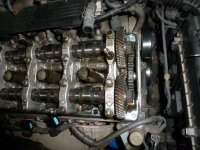Shel_B
Site Donor 2023
- Joined
- Aug 7, 2020
- Messages
- 5,167
I have some vague memories of gear-driven overhead cam engines, maybe from back in the 60s. Are there any such engines being used/manufactured today? Perhaps for racing or some very high-performance engines?
I would think such a design might be stronger than a chain-driven setup. Maybe not as fuel-efficient for a street engine? Any thoughts pn the subject?
I would think such a design might be stronger than a chain-driven setup. Maybe not as fuel-efficient for a street engine? Any thoughts pn the subject?

